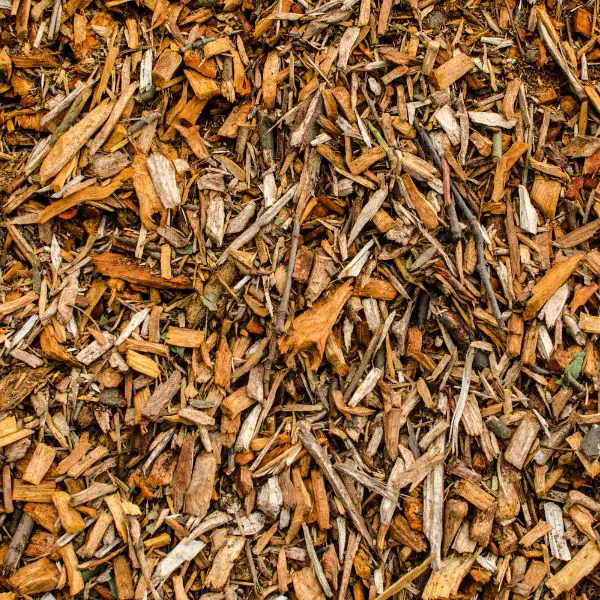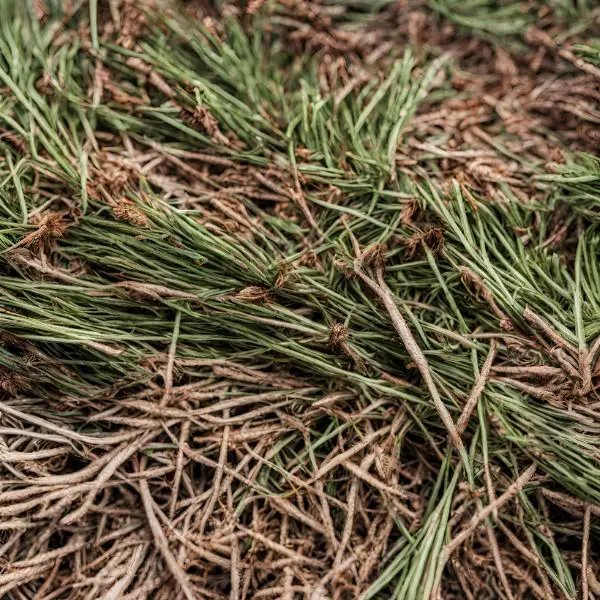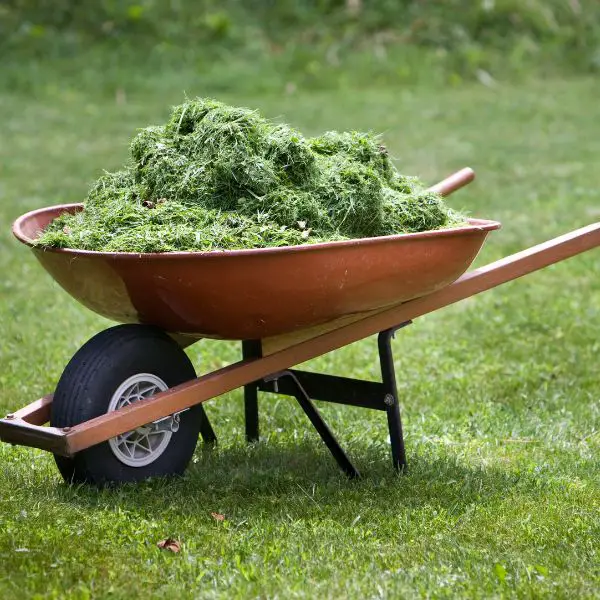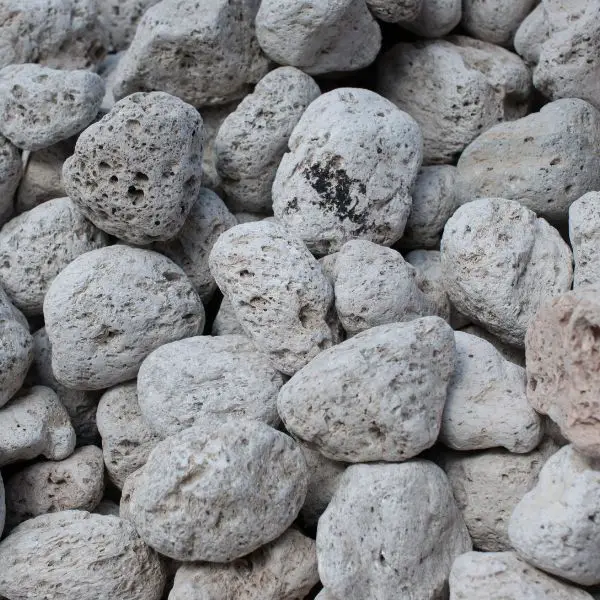In the realm of landscaping, selecting the ideal groundcover is pivotal, and the debate often centers around barkdust vs mulch – two contenders with distinct advantages and roles in garden health and aesthetics. Barkdust, with its vibrant hues, offers a visually appealing touch alongside moderate nutritional benefits for the soil. On the other hand, mulch, though perhaps less striking in appearance, is a powerhouse for enhancing plant growth and soil health.
The question then arises: which is the superior choice for your landscaping needs? In this detailed comparison of barkdust vs mulch, we aim to provide clarity on this matter. We’ll delve into their key differences, weigh the pros and cons, address frequently asked questions, and even explore alternative solutions for those unique landscaping projects that might call for something different.
Join us as we navigate the intricacies of barkdust and mulch, equipping you with the knowledge to make an informed decision tailored to your garden’s requirements.
Table of Contents
Bottom line up front
While it’s not as pretty, mulch is really the best option for landscaping if you really want to promote plant growth and save a little money. Mulch will need less watering , prevent soil erosion, keep weeds at bay, and really raise the nutrient profile of your soil.
Bark dust can offer a little nutrition, but it’s really best at looking good – that colorful bark stays in place well – and it can also raise the alkalinity of the soil to the benefit of certain plants. That said, decomposing bark can leach nitrogen from the ground and the plants that are using it.
All in all, mulch is really the option with the most perks, but we’ll lay it out in more detail so that you can get a good idea of the bigger picture – depending on your needs, barkdust might do nicely – it all depends on what you’re growing!
To properly assess these two groundcover options, it’s crucial to understand their characteristics in different contexts. For instance, cubic yards of mulch might be required for large garden beds, whereas smaller areas might benefit from a thick layer of barkdust, especially around trees or in vegetable gardens where soil moisture and temperature regulation are key concerns.
Let’s take a look!
What is Mulch?
Mulch, rich in organic material, contains an assortment of ingredients including shredded woods, hay, and pine needles. This diverse array of organic mulches contributes to soil health by improving moisture retention and suppressing weed growth.
Whether you’re covering garden beds or using mulch as a decorative element in flower beds, selecting the right type of mulch, such as hardwood mulch for nutrient-rich top dressing or bark nuggets for larger planting beds, can dramatically affect soil fertility and plant health.
Here’s a list of what all can be included in mulch:
- Shredded/processed woods
- Shredded leaves
- Hay or straw
- Nut shells
- Pine needles
- Cocoa bean or other hulls
- Grass clippings
- Newspaper or cardboard
Organic mulch acts as a barrier for weeds, helps in retaining moisture, and above all, it decomposes to create a constant flow of nutrients to the benefit of the plants where it resides.
If your intent is to make all of the plant life in your yard thrive, then mulch is the way to go – it supercharges the soil and you can make your own or obtain commercial mulches fairly inexpensively.
What is Barkdust?
When you hear the term ‘Barkdust’, it’s the same as some other terms you’ll hear like ‘bark mulch’ or ‘bark chips’ and what it boils down to is essentially tree bark that has been first chipped and then shredded for use as cover.
It can come from different woods, although the most common are spruce, fir, redwood, and pine, and it is considered a premium landscaping option so it costs considerably more than mulch.
Barkdust is often sourced from the bark of trees like Douglas fir and hemlock in the Pacific Northwest and not only serves as a protective layer for soil but also as a decorative element with its different colors and textures. It’s particularly valued in landscape design for its ability to enhance alkaline soil conditions and serve a similar purpose in both residential and commercial properties.
Depending on the type of wood, some nutrients may be produced when it decomposes, but for the most part it’s there to look good. It CAN increase the acidity of the soil, so there are certainly plants that would benefit from a barkdust covering, and that’s definitely something to consider.
That said, for the most part it is prized because it lasts long, the wood is often quite colorful, and it’s easy to place around shrubs and trees and once it’s put down, it tends to stay there through rains and other inclement weather (although sunlight will slowly fade that color).
We should note that not all barkdust is formulated the same – some premium varieties can provide a little extra nutrition in the bargain, although this increases the cost considerably.
Barkdust vs Mulch – Main differences
Wise folks have long said that the best way to understand two things is to have a good idea of their differences, so we’ll tell you the main differences between barkdust and mulch in a compact format so that you’ll get all the ‘important notes’ before we delve deeper into key features and pros and cons.
Here are the main differences between barkdust and mulch:
- An organic mulch is primarily geared towards providing excellent and cost-effective nutrition for growing plants, while barkdust is more about colorful and classic aesthetics.
- A basic organic mulch can provide a wide range of nutrients, while a basic barkdust can make the soil more acidic and potentially leach nitrogen from the soil as it decays.
- While floods can wash away both, mulch is more resistant to heavy rains than barkdust, as the wood from barkdust is prone to floating away if enough water is involved.
- Bark dust has a more uniform consistency because it is made from singular materials, while mulch consistency will be rougher due to its many assorted components.
- Mulch is very cost effective – commercial varieties are inexpensive and it can be made at home. By contrast, barkdust is much more expensive and impractical in most cases to make at home.
- Barkdust looks great wherever you place it – be it around trees, underneath shrubs, or in walkways. Mulch doesn’t look bad, but it is very much plain in comparison to the colorful barkdust.
Key Features of Barkdust

Now that we’ve covered the main differences between barkdust and organic mulch, it’s time to take a closer look at the key features of each and their specific pros and cons. We’ll start off with barkdust, which comes with the following key features:
- Protects soil – Barkdust helps to provide a protective layer over the soil, which in turn increases moisture retention and helps to insulate the plants below when it gets chilly outside.
- Great aesthetics – Barkdust is quite colorful and depending on the wood it’s made from, you’ve got a lot of options for creating a unique aesthetic in your yard or garden.
- Improves alkalinity – For gardens that require a specific pH, such as those hosting plants that thrive in alkaline soil, barkdust made from specific wood products, like pieces of bark from Douglas fir trees, can be a good choice. This is especially relevant in regions like the Pacific Northwest, where the local flora benefits from the soil conditions that barkdust can help create.
- Long-lasting – Bark dust often contains nuggets and larger chunks of wood and it can take a long time to decay, so that a layer may be put outside and the maintenance is appreciably minimal.
- Premium blends offer enhanced nutrition – While they are more expensive, there are barkdust blends that will offer more nutrition than your standard-variety barkdust.
Barkdust: Pros and cons
When you get right down to the nitty gritty, the pros and cons of each choice are likely where you’ll find any deal breakers, so let’s get started on these for both options and then we’ll talk about alternatives in case you’ve decided that neither will be a good fit.
The Pros:
- Barkdust looks really good in your yard or garden. The colorful bits of wood really draw the eye and can outline trees, walkways, and just about any other spot that you’d like to highlight to perfection.
- It will provide nice cover for soil and help to retain moisture in the process.
- This option is also a great mix of form and function when it comes to acid-loving plants.
- Barkdust isn’t very heavy, so it’s easy to put into place in hard-to-reach spaces.
- The wood bits from barkdust are great at keeping weeds away.
- It lasts a long time and requires little maintenance on your part.
The Cons:
- Barkdust is not as cost-effective an option as many alternatives.
- Sunlight can fade out colors over time and as the wood floats, it washes away more easily than many alternative options.
- Barkdust can leach nitrogen from the soil as it decays, which means you’ll have to consider that when fertilizing your plants or you’ll be in for a nasty surprise.
- The soil acidification is a dual-edged sword – you may not want to place it too close to certain plants, and the pH changes could affect the health of your plants.
- Depending on the wood type, bark dust may contain splinters that your pets could get in their paws, and ingestion of the wood is a potential choking hazard for dogs.
- Barkdust can attract termites, so you need to be careful where you place it.
Key features of Mulch

Now that we’ve covered the barkdust, let’s look at some of the key features of organic mulch. Here is a breakdown of those key features:
- Highly nutritious – Mulch is great at providing nitrogen, potassium, phosphorus, and other nutrients into your soil where your plants can make good use of it.
- Protection – Mulch provides ground cover that helps to retain moisture and keep weeds at bay.
- Inexpensive – Mulch is highly cost-effective – commercial blends are cheap and you can also easily make it at home.
- Improves soil overall quality – Mulch not only insulates the soil but helps to break down clay so that there is a marked improvement of soil quality over time.
- Moderate aesthetic value – Mulch looks nice when it’s laid out and contrasted with all those healthy, blooming plants that it’s supporting.
Mulch: Pros and cons
Now it’s time to look at the pros and cons of mulch and then we’ll move on to the alternative options. Below you’ll find the pros and cons of mulch to help you to make your decision.
The Pros:
- Mulch improves soil quality dramatically – you get better aeration over time, you can control the nutrient profile based on the mulch ingredients, and the timed-release nutrients mean that you’ve got consistent nutrient flow without extra fertilizer.
- It’s great for keeping plants warmer when it’s chilly and for retaining moisture in the summer.
- Organic mulch is excellent for keeping weeds at bay – you’ll still need to pull them first, but once it’s in place then it does a great job as a weed-barrier.
- Mulch is one of the most cost-effective options out there and you can even make it at home.
- It is moderately attractive in your yard so it has some minor aesthetic value.
- While flooding can wash away just about any covering, mulch is fairly resistant to heavy rains up until a point.
The Cons:
- Mulch isn’t as visually pleasing as some options and this may be a dealbreaker for a few folks out there.
- The smell doesn’t appeal to everyone, although this will vary from mulch to mulch.
- While cheap to purchase, organic mulch is bulky and may be expensive to transport and harder to haul to hard-to-reach places where you might want to put it.
- Anything organic is going to attract bugs and mulch is no exception to this rule.
- Dried organic mulch is a potential fire hazard if not carefully stored.
- Mulch needs to be replaced every year or two, so there is more maintenance than with barkdust which can last for years.
7 Alternatives to Barkdust and Mulch
Now that you’ve gotten a better look at both barkdust and mulch, it’s time to take a look at some of the alternative cover options you can use instead. For each one, we’ll tell you a little about the medium, as well as a few pros and cons to consider.
That way, you’ll know what they bring to the table and if you want to mix and match with some options that you already have at home, then you’ll be able to apply them strategically based on their merits.
Let’s take a look and you can see what you think!
Organic Mulches
Pine needles

If you have pines on your property or simply want an option that’s 3.5 times cheaper than wood mulch but has a lot of the same perks, then pine needles might well be worth your consideration. Aside from the lovely golden-orange coloration, here are some of the pros and cons of this choice.
The Pros:
- Pine needles degrade slowly, so a covering of pine needles will last a few years before you need to refresh it. As it ages, the golden-orange color will turn silver and you can simply add a fresh, thin layer in spring if you want to keep the hues looking fairly consistent.
- Pine needle mulch keeps out weeds and provides excellent insulation.
- They are a sustainable option that will look attractive without the need for dyes that could seep into your garden or yard.
The Cons:
- Pine needles are not a good fit for windy areas or locations prone to fires.
- Weeds have an easier time infiltrating pine mulch, although you can minimize this with a 3 inch thickness for your cover and by keeping an eye out for any weeds that get too close.
- If you don’t have pines in your area, you’ll have to buy it – but it only costs around 1$ for 12.5 square feet of coverage (compared to 1$ for 3.5 feet of coverage with barkdust), so this may not be a dealbreaker.
Grass clippings

Grass clippings are easy to come by – just bag ‘em after you mow the lawn and you’ve got a natural cover that’s chock full of nitrogen and other nutrients to feed back into your yard. Let’s look at the pros and cons!
The Pros:
- If you’ve got plants that could use extra nitrogen, grass clippings are definitely up to the job.
- They’re also pretty good at keeping out weeds and insulating the ground to prepare for when it’s cold outside.
- It’s a super cost-effective option that’s sustainable and uses your yard to power your yard – a definite perk, we’d have to say!
The Cons:
- Grass clippings don’t last so long as far as cover goes – you’ll need to replace it once a year.
- Grass generates a little heat as it decays and while this is nice for the winter, if you live somewhere like Texas or Arizona where it’s plenty hot already, then this might now be ideal.
- It’s not as pretty as a lot of your other options and you need to be careful not to compact it too much – if applied too thickly, you might choke off the water and air getting to your soil.
Green Mulch
Why use a ‘dead’ mulch when you can plant a living one? ‘Green mulch’ is the term most commonly used for low-growing, living plants that can provide cover and nutrients while adding a bit of biodiversity to your yard and garden.
Some examples of plants that you might use include clover, alyssum, creeping thyme, and lamium, but check at your local nursery – sometimes they’ll have some great tips for green mulch options that you can use.
Like every mulching medium, it has its perks and caveats, so let’s move on to those and you can see what you think!
The Pros:
- These low-growing plants do a great job of forcing weeds to keep their distance.
- Their proximity to the ground offers natural cover and increases moisture retention.
- You won’t need to replace them anytime soon and this natural option will attract beneficial insects and help to improve the quality of the soil.
The Cons:
- You’ll need to check what insects your choices will attract – if you’re not careful, you might attract the kind of insects or animals that want to snack on your beloved plants.
- You’ll have to evaluate the nutrients that your primary plants need and then compare them to your Green mulch plants so that they aren’t competing.
- Some options spread quickly, which may or may not be a good thing, so you may need to spend a little extra time keeping an eye on your living mulch.
Cocoa bean hull

Cocoa bean hulls, a byproduct of the chocolate industry, offer a unique and aromatic option for garden mulch. These hulls come from the outer shell of roasted cocoa beans, which are removed during processing. Here’s what you need to know:
The Pros:
- Nutrient-Rich Decomposition: Cocoa bean hulls decompose slowly, enriching the soil with nutrients over time, making them a sustainable mulching option.
- Aesthetic Appeal: Their unique appearance and the initial chocolate aroma enhance the sensory appeal of gardens.
- Soil Improvement: These hulls enhance soil structure, moisture retention, and weed control.
The Cons:
- Pet Toxicity: Cocoa bean hulls contain theobromine, which is toxic to many animals, posing a risk to pets if ingested.
- Cost: They tend to be more expensive than some traditional mulch options.
- Mold and Pests: In humid conditions, they can develop mold and attract insects if not properly managed.
Inorganic Mulch Options
In contrast, inorganic mulch types, such as stone or rubber mulch, offer longevity and minimal maintenance for specific landscape applications. These materials, while not contributing to the soil’s organic matter, are excellent for creating weed barriers, regulating soil temperature in summer months, and adding architectural design elements to garden beds and small areas without the concern for water loss or soil compaction.
Stone

Stone mulch offers a timeless and durable option for landscape design, with various types like gravel, pebbles, and river rock.
The Pros:
- Longevity: Stone mulch provides a permanent solution to weed suppression and soil moisture retention.
- Low Maintenance: It requires minimal upkeep, aside from occasional cleaning and rearranging.
- Thermal Benefits: Stones can absorb and radiate heat, benefiting plant life during cooler periods.
The Cons:
- Weight and Cost: Stone is heavy to transport and can be expensive to purchase and install.
- No Soil Enrichment: Unlike organic mulches, stone does not add nutrients to the soil.
- Debris Accumulation: Wind can deposit leaves and other debris among the stones, requiring cleanup.
Pumice

Pumice stone mulch is a lightweight volcanic rock that offers several benefits for gardeners looking for an alternative to heavier stone mulches.
The Pros:
- Insulation and Aeration: Pumice provides excellent soil insulation and aeration, promoting healthy plant roots.
- Pest Resistance: Its texture and composition deter many insects.
- Durability: While lighter than traditional stone, pumice is long-lasting and provides a unique aesthetic.
The Cons:
- Gradual Degradation: Pumice will eventually break down, though more slowly than organic mulches.
- Cost-Effectiveness: It may not be as affordable as some mulch options, given its specialized nature.
- Limited Nutrient Supply: Provides minimal, if any, nutrients to the soil.
Rubber mulch

Rubber mulch, made from recycled tires, is a contemporary choice known for its durability and vibrant color options.
The Pros:
- Durability: Can last up to a decade, offering a long-term mulching solution.
- Flood Resistance: Does not absorb water, preventing washouts and reducing waterlogging.
- Weed Control: Effectively suppresses weed growth and is stable in adverse weather conditions.
The Cons:
- Soil Health Concerns: Rubber mulch can release volatile organic compounds (VOCs) and heavy metals as it degrades, potentially harming soil health.
- Fungus Risk: Requires maintenance to prevent white and brown rot fungus growth.
- Pest Attraction: May harbor pests like Asian cockroaches in certain regions.
Frequently Asked Questions
It’s almost time for us to hang up our hats and call it a day, but before we go we’ve got a few frequently asked questions that might help you to make your final decision on the best ground cover and mulching option for your needs. Let’s take a look and then we’ll get to formally wrapping things up!
What is the difference between bark dust and mulch?
Barkdust, primarily used for its aesthetic appeal, adds a slight alkalinity to the soil beneficial for certain plants but offers limited nutrients. Mulch, made from decomposed organic matter, enriches the soil with essential nutrients like nitrogen, potassium, and phosphorus, supporting plant health despite its less polished appearance.
What is the best use of bark mulch?
The best utilization of bark mulch is putting it around trees, shrubs, and perennials, bark mulch maintains soil moisture, prevents compaction, and attracts beneficial organisms, though it doesn’t significantly enhance soil nutrient content.
Is bark mulch better than wood chips?
Wood chips, derived from the inner parts of trees, are superior for moisture retention and soil health compared to bark mulch, offering a balance of aesthetics and functionality.
Conclusion
The choice between barkdust and mulch depends on specific garden needs: mulch for nutrient addition and soil improvement, and barkdust for aesthetics and slight soil pH adjustment. Other mulching options like cocoa bean hulls, stone, pumice, and rubber mulch offer unique benefits and drawbacks, from pet safety and cost to maintenance and environmental impact. Your decision should align with your gardening objectives, local climate, and the specific needs of your plants and soil.
More plant guides
